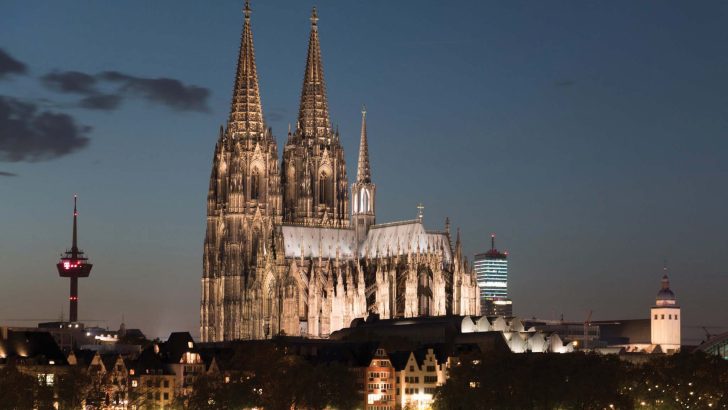Under pressure of space this week, the series on places of faith, having encompassed lesser known aspects of Northern Europe, crosses the Atlantic, moving from the shrines of the Old World in Germany to the shrines of the New World in South and North America, from very ancient places honouring Jesus and the Three Kings, to those celebrating some of the world’s newest saints.
Some of Europe’s oldest shrines and relics
The Germanic nations of Germany, Austria, and northern Switzerland seem to me to be quite unfamiliar to Irish tourists in search of shrines and sites of faith.
Take Cologne Cathedral, for instance, one of the first places where the new Christian faith would have been established in the time of the late Roman Empire.
The Cathedral is a very beautiful creation, which has survived the hazards of war and social turmoil over the centuries, as well as the disruptions of the Reformation. Cologne’s early claim to fame, in the eyes of medieval pilgrims, was that it preserved relics of the “Three Kings”, those Magians from the Chaldean region of Mesopotamia who travelled across the intervening deserts to pay homage to the newly born baby Jesus.
What Scripture knows of them can be read in a minute or two in Mathew 2:1-2:12. What tradition claims is a more complex matter. What the pilgrim can see are relics which while being of middle eastern derivation, are as doubtful as most other relics of their kind.
In recent decades there has been much controversy about the Turin Shroud, again a matter that arouses passionate feelings. But few seem to pay any attention to the Holy Coat preserved at Treves. Again this is a debatable matter, but such doubts should not prevent anyone from visiting Treves itself, which is a place of very great interest.
It was in these early cities that the millennia long urban culture of northern Europe had its beginning, and in which, alas, civilisation may well come to any end.
The hallowed places of the Americas
One of the first saints outside of Ireland that I can recall the good nuns bringing to my attention was St Martin de Porres (along with St Juan Macias). In Dublin, at least, he has long been a popular saint thanks to the promotion of his cause at the shrine in Parnell Square, maintained by the Dominicans. Though beatified in 1837, he was not actually canonised until 1962.
But in South America, especially in his native Peru, he has a special place as a black saint, as a large proportion of the populations in some states are of black descent. Slavery, we need to recall, lingered long in Latin America; in Brazil, for instance, it was abolished only in 1888. He is buried in the Basilica of Santo Domingo in Lima, the capital of Peru.
But for the fervour of its devotees we have to turn to the shrine of Our Lady of Guadeloupe, in the Basilica of Our Lady of Guadalupe on Tepeyac Hill in Mexico City, Mexico. This warm popular devotion to her is derived from claims made about a series of Marian apparitions in 1531. The legend was the subject of a very detailed book for general readership, which is still widely read, by Frances Parkinson Keyes.
By contrast in its brutal modernity is the martyrdom of Archbishop Oscar Romero, murdered by an agent of the Salvadorian government on March 24, 1980. After much delay Romero was beatified by Pope Francis in October 2018. The social justice that he promoted for ordinary people everywhere is still hard to attain.
Also among the recent American saints is the native American saint Kateri Tekakwitha. Tekakwitha was her tribal name as an Algonquin Mohawk, when she was born in 1656, though she was later baptised Catherine, and informally became known as “The Lily of the Mohawks”. She died in April 1680, a virgin dedicated to God. Her birthplace was the Mohawk village of Ossernenon, on the south bank of the Mohawk River in upper New York State.
The 10th anniversary of her canonisation will be marked on October 21 this year. Details of this celebration can be found from the website of the National Shrine of the Saint.
* * *
In their very variety these American saints suggest the vitality of faith in South and North America. Though many kinds of Christian faiths now abound in the Americas, religion in traditional form is in decline in these continents as elsewhere, or at least entering a period of transition, which may have surprising outcomes.
Certainly the changes in these nations require attention, for the lives of these saints are in themselves examples of just how varied the human experience of the divine can be.


 Peter Costello
Peter Costello Cologne Cathedral.
Cologne Cathedral. 